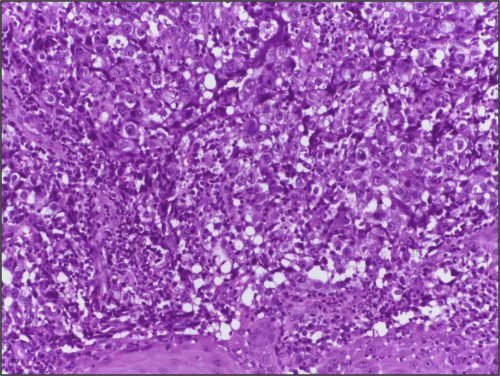Skin provides us with an incredible range of sensory input. We feel the softness of a pillow as we drift off to sleep or feel a jolt of pain when we touch a hot stove. But skin isn’t just a highly evolved sensor; it bends and stretches with our movements and heals itself when we get a scratch. Creating a material that mimics these properties has the potential to give prosthetics a sense of touch or robots an understanding of their sensory environment. Electronic skin, or e-skin, is a developing technology that sets out to do just that.
E-skin is a thin electronic material designed to imitate properties of human skin—an ability to receive sensory input and, ideally, an ability to self-heal. Researchers all over the world are developing e-skin for one application or another, whether it is for shirts that monitor body condition or for magnetic sensors with potential applications in virtual reality. But one issue that all electronic skin faces is what to do with it if it becomes too damaged or worn to be used. The usual answer is that the electronic material has to be discarded along with the 50 million metric tons of electronic waste generated every year. The materials in electronic waste are valuable and potentially hazardous to environmental and human health—dual deterrents to their disposal.
A group of researchers at the University of Colorado Boulder, led by professor of mechanical engineering Jianliang Xiao and professor of chemistry and biochemistry Wei Zhang, recognized this issue and set out to develop an e-skin that offered the best of both worlds: full recyclability, complex sensory recognition, sufficient flexibility, and the ability to self-heal. Made from a polymer known as polyimine that is laced with silver nanoparticles, the material has implications for products that respond to environmental stimuli, like prosthetics, robotics, smart textiles and even space suits.
The e-skin’s self-healing and recycling properties make it straightforward to use. When the e-skin is torn, the addition of a healing agent, pressure, and heat allows the chemical bonds on either side of the skin to reform. Irrevocably damaged or unwanted e-skin can be fully recycled via soaking in a recycling solution that breaks the e-skin down to its chemical components, which can then be used to create a new patch of e-skin.
The key to the recyclable and self-healing properties of this new type of artificial skin lies in its use of a dynamic covalent thermoset, a type of crosslinked polymer that can break and reform its covalent bonds reversibly under certain conditions. Polyimine, the dynamic covalent thermoset used in the e-skin, has an advantage over other materials traditionally used in e-skin thanks to its dynamic covalent bonding, which allows for the e-skin’s recyclability, malleability, and self-healing properties. The polymer also exhibits higher chemical and thermal stability as compared to other self-healable e-skin, which helps it work in a range of external conditions.
However, polyimine by itself is an insulator; it blocks electrons from moving through the material. The sensing devices require an exchange of electrical information through the e-skin, but these electrical signals cannot pass through pure polyimine. This is where the silver nanoparticles come into play: they introduce conductivity to the e-skin material and, therefore, enable the sensors that allow the e-skin to demonstrate sensitivity to pressure, temperature, flow, and humidity. When used together, the polymer and silver nanoparticles give the skin its diverse properties: self-healing, recyclability, and malleability from the polyimine, and conductivity that enables sensor functionality from the silver nanoparticles.
The diverse capabilities of this e-skin are impressive, but there is still more work to be done. “A few things need to be improved: better self-healing and recycling capability, improved mechanical flexibility, enhanced sensitivity, and spatial resolution,” Xiao said. His team plans on looking into achieving these improvements.
The e-skin’s multifaceted functionality has applications across a wide array of industries—from robots to aerospace—and its recyclability reduces waste and material costs, both huge benefits in commercial applications. But beyond its potential role in making sophisticated sci-fi robots a reality, the e-skin may find its earliest roles in more practical applications. “Among [the applications of e-skin], we think the most significant impact in the near future would be in the healthcare industry—for example, enabling sensation of prosthetics and health monitoring of human bodies,” Xiao said. With its high reusability and ability to feel and bend like real skin, this e-skin has the potential to have a small impact on the environment, but a large impact on the technology and people within.

